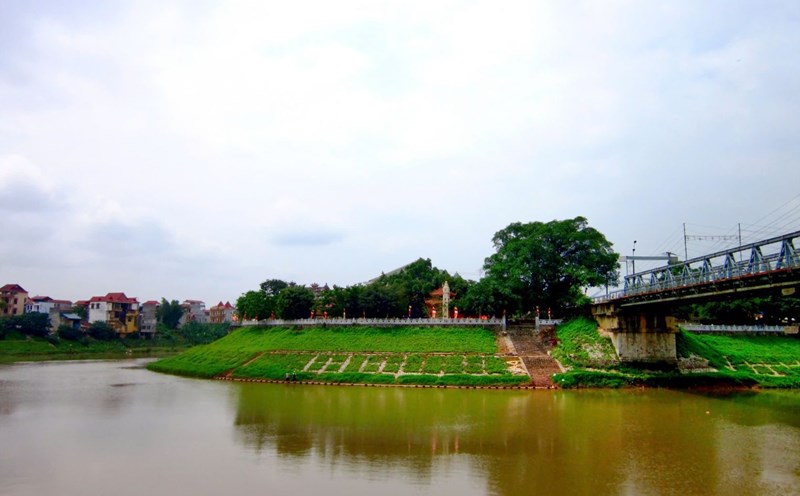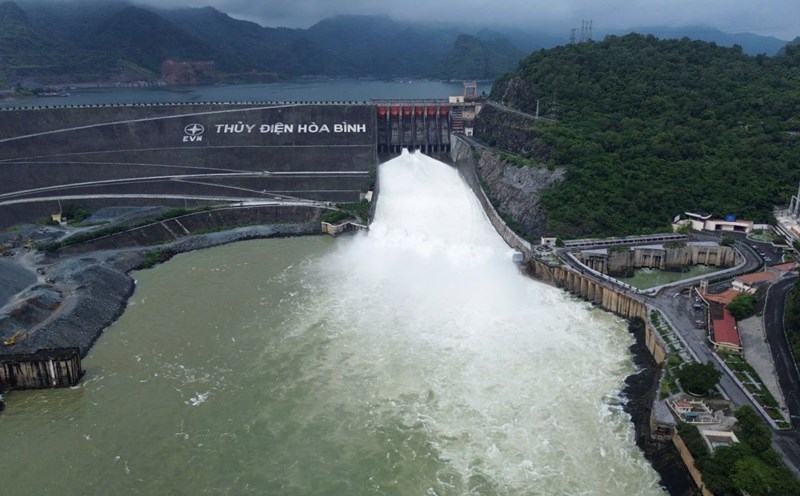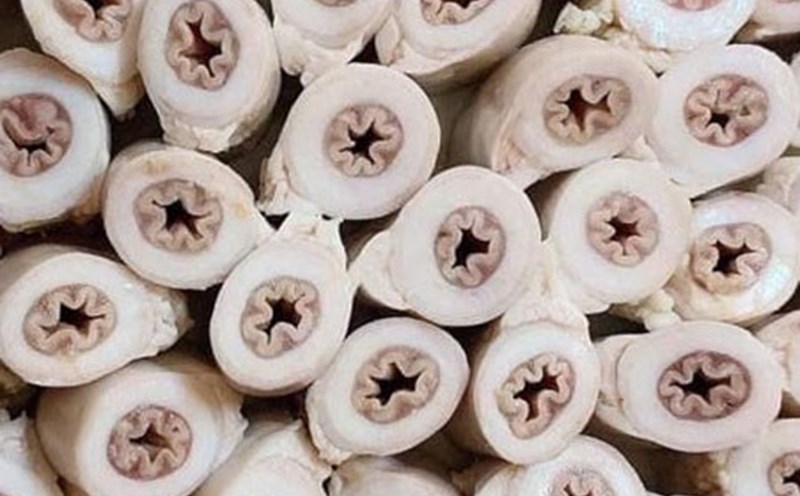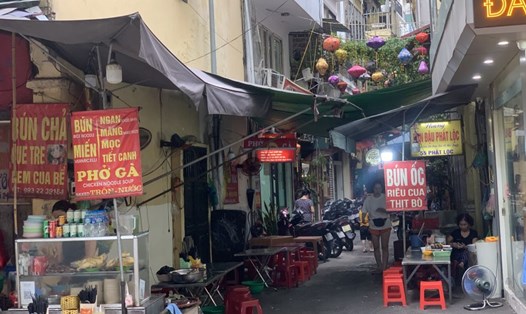4,000 YEARS OF LONG NAMES
The Red River originates from the Ai Lao mountain range in Yunnan province, China. When entering Vietnam, the Red River flows through the provinces of Lao Cai, Yen Bai, Phu Tho, Ha Tay, Vinh Phuc, Ha Noi, Hung Yen, Ha Nam, Nam Dinh and Thai Binh and then flows into the sea through 11 estuaries.
The Red River originates at an altitude of 1,776m above sea level, and when it enters Vietnam, its altitude is only 73m. The total length of the Red River is 1,149km, of which 556km flows through Vietnam. The Red River basin is very large, covering an area of approximately 145,000km2, with two main tributaries: the Da River (right bank) and the Lo River (left bank).
Faced with the majesty of the Red River, Vietnamese people used the most noble names to call this river to show respect and dignity such as Cai River (Mother River), Ca River (Big River), and then identified the Red River with Mau Thoai of the folk belief in the Four Palaces.
But not only the Big River, the Big River, the Mother River, the Red River also has many other names. In historical records and in folk usage, people have mentioned different names for this river. Due to the importance of the Red River in the lives of the local community, each section is called by different names.
In total, the Red River has more than 10 official names and many names used by the people. According to historical records, when it flows into Vietnam, the Red River has the names Thao River, Nhi River, namely Nhi Ha, Phu Luong River, Bach Hac River, Tam Doi River, Dai Hoang River, Xich Dang River (or Dang River), Hoang Giang River, Lo River (or Lo Giang), and Hong River (or Hong Ha).
The two names of the river Phu Luong and Lo Giang appeared earlier. The name Phu Luong dates back to the time of the Trung Sisters (40 AD) and was still used until the Ly Dynasty (1010). The name Lo Giang dates back to the Tran Dynasty and was recorded in "Complete Annals of Dai Viet".
The Red River also has a popular name, the Cai River. When the French colonialists invaded our country, this Cai River was always "red with heavy alluvium" so the French called it "Riviere Rouge" (river with red water) and the name Hong River or Hong Ha began to be used.
It can be said that the name Red River or Hong Ha, which is commonly used today, officially appeared in the 19th century. However, the word "Hong - according to Sino-Vietnamese words" in the name Red River means "large, huge, very large" similar to the word "Cai" and the word "Ca" in Vietnamese.
Comparing Vietnamese and Sino-Vietnamese vocabulary, we see “hong phuc - big fortune”, “nan dai hoc - big water disaster”; “ duong dau - big road, toe/thumb - biggest toe/hand”; then “du ca - big chopsticks, anh/chi oi - oldest brother/chi oi, ha noi - first wife”...
The group of names of the Red River such as Cai River, Thao River, and Hong River all describe the nature and characteristics of the river as a large river, a main river, a river that plays a leading role in the Northern Delta. Meanwhile, the name Nhi Ha River describes the characteristics of the river water flowing around like the shape of an ear.
Meanwhile, the names Bach Hac, Tam Doi, Xich Dang and Dai Hoang of the Red River are used to refer to the area and territory that the Red River flows through. Bach Hac River is the location where the Red River merges with the Da River at the Hac junction (Viet Tri), Tam Doi River is the section of the Red River flowing through Tam Doi district (Phong Chau, Phu Tho).
Similarly, the section flowing through Dai Hoang (Ly Nhan, Ha Nam) - the hometown of the typical literary characters Chi Pheo and Thi No in Nam Cao's most famous short story. Xich Dang River is the name when the river flows through Dang Chau (Khoai Chau, Hung Yen).
It can be seen that the Red River has many names, perhaps the most among the rivers in Vietnam in general and the North in particular. That is obvious because the number of those names is proportional to the level of respect that people have for a river, a deity or a great hero who has contributed to the country and the people.
MOTHER'S MERIT - RED RIVER
Since the time when "the place where the Red River flows into Vietnam", which was a small ditch in Lung Po stream, A Mu Sung commune, Bat Xat district, Lao Cai, the Red River has not only provided water for human life, provided a traffic route but also provided alluvial particles to build up the Red River Delta for thousands of years.
Let's quantify that work in numbers: Every year, the Red River supplies the delta with 112 billion cubic meters of water, including 120 million tons of alluvium. The total land area of the delta that has been deposited by the Red River is 1,479,416 hectares, including 8 provinces and 4 cities: Hanoi, Hai Phong, Hai Duong, Hung Yen, Nam Dinh, Ha Nam, Ninh Binh, Thai Binh, Ha Tay, Bac Ninh, Vinh Phuc.
The Red River is still tirelessly expanding its territory by encroaching on the sea at 11 river mouths, with an average of 300 meters per year. Thus, every 200 years, the Red River Delta increases its area by about 115 square kilometers, equivalent to 50% of the area of Hai Hau district (Nam Dinh).
From that fertile and rich delta foundation, the wet rice civilization was formed in the Northern Delta - a rich land formed by the Red River, with abundant alluvium and water every year. This civilization is also known as the Red River civilization (appearing from the 2nd millennium BC to the 15th century).
Not only that, the Red River is also the cradle that nurtured the culture of Vietnam and the Red River is also the origin of the sedentary lifestyle and the origin of village culture that still has influence in Vietnam despite all efforts of assimilation.
When traveling along the more than 500km waterway of the Red River in Vietnam, we will see on both sides of the river layers of cultural - historical - religious - political relics, from the time of An Duong Vuong to Hai Ba Trung, and later Thang Long - Dong Do - Hanoi, along with the towns of Son Nam Ha. Son Nam Ha was the largest rice granary in the country before the Mekong Delta appeared in the South.
Until now, the Red River is still the source of the Vietnamese people, continuing to pump fresh red nutrients to keep the delta land fertile and lush, continuing to provide irrigation water and domestic water to nurture the ecosystem in the delta, including humans.
Therefore, any changes in the flow of the Red River are considered a matter of utmost importance because they affect both the ecosystem and the lives of tens of millions of people. Therefore, the Red River, regardless of its name or era, is always a sacred river in the minds and material lives of the Vietnamese people, a Mother River that is tolerant and generous to the entire land that created the country of Vietnam!











